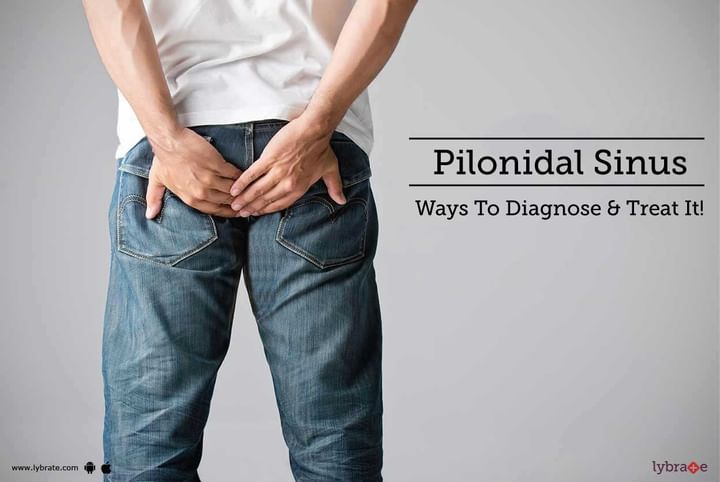Pilonidal Sinus - Ways To Diagnose & Treat It!
Pilonidal sinus or cyst develops in the intergluteal cleft (the cleft between your buttocks). The cyst contains dirt, hair, and debris, and looks like a giant pimple located right above the tailbone. A pilonidal cyst, just like any other cyst, may become infected and be filled with pus. When this happens, the condition becomes extremely painful and discomforting.
Pilonidal sinus is more common in men than in women. Usually, people who sit for hours on a desk job, or while driving a vehicle are prone to pilonidal cysts.
Causes of Pilonidal Sinus (PNS):
The exact cause of PNS is not known yet. The condition may be congenital (present at birth) or develop over time. However, doctors believe that bacteria and dead skin cells get trapped in the pores in the form of debris and tiny hair particles to form an abscess.
Pilonidal sinus may also develop due to hormonal changes, and friction from tight clothes, hair growth etc.
How to identify PNS?
Most people do not notice the development of a pilonidal cyst in the buttock cleft unless it becomes infected and exhibits symptoms. You will encounter the following symptoms if the cyst becomes infected-
• Pain when standing or sitting for long
• Swelling
• Sore, reddened skin around the affected area
• Blood or pus draining from the cyst along with a foul smell
• Hair sticking out from the lesion
• Formation of multiple sinus tracts in the skin
You may also have a mild fever sometimes.
How to treat PNS?
If the condition is diagnosed early, when the symptoms are not severe, the doctor will prescribe antibiotics to treat the infected area. Lancing and injections are also effective treatment options to alleviate symptoms of PNS.
However, if conservative treatment fails to deliver the desired results, then you will need to undergo surgery. General surgery for pilonidal sinus is performed in the following sequence-
• Anaesthesia is administered to the patient prior to the surgery
• The surgeon opens the lesion to remove debris and hair and drain the pus from the cyst
• After the procedure is completed, the doctor carefully stitches the wounds
Following the surgery, you will need to change the dressing frequently in order to avoid infection. Surgery is the most effective treatment method for pilonidal cysts. It not only removes the pus-filled cysts but also prevents recurrence of the disease. Therefore, the results are long-term.



+1.svg)
